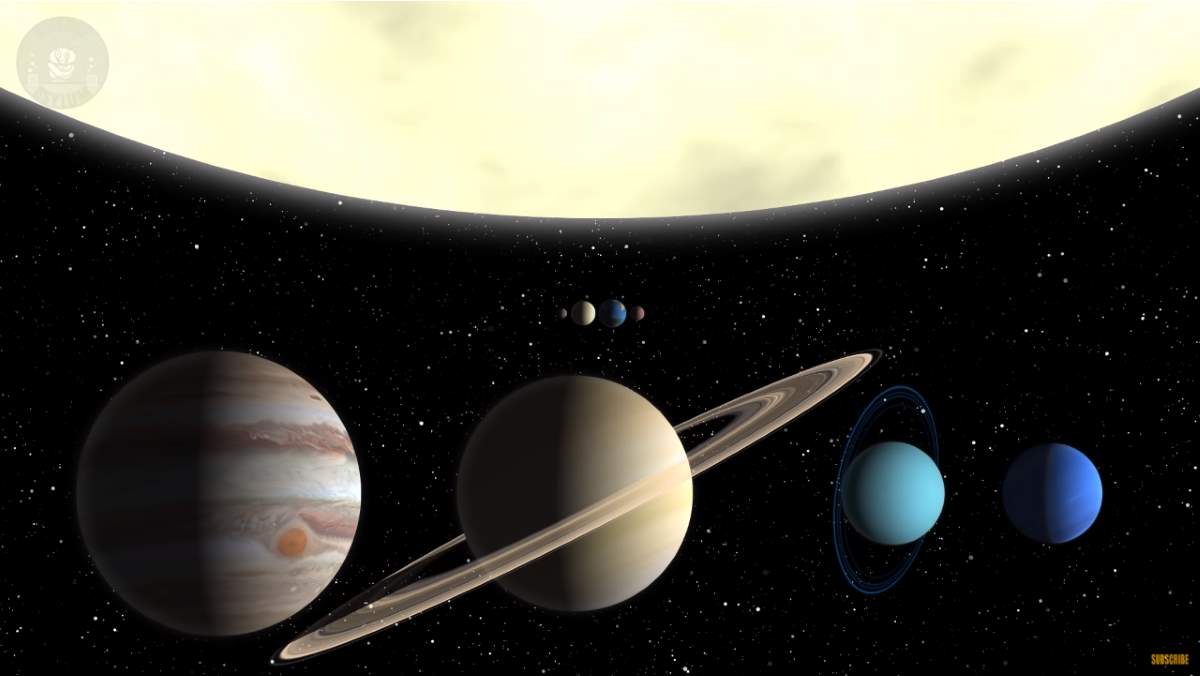NASA Goddard Planetary Scientist Dr. James O’Donoghue (@physicsJ) created another beautiful video showing the relative rotation speeds of Solar System planets.
In the video below, Dr. O’Donoghue shows the rotations of each planet moving to a relative scale. For example, the largest planet in our Solar System, Jupiter rotates around 2.4 times faster than Earth.
Venus and Uranus are rotating backward as they appear to rotate counter-clockwise.
Relative rotation speeds of the planets (2D)
Dr. O’Donoghue also prepared a one-way version:
Relative rotation speeds of the planets (3D)
And here is the 3-D sphere version:
Relative rotation speeds and the sizes of the planets
Dr. James O’Donoghue created an amazing animation showing solar system planets, their relative rotation speeds, and their size (in scale).

Related: How Fast Are You Spinning?
Rotation periods and speeds (at the equator) of Solar System planets
Planet – Rotation Period – Revolution Period – Rotation speed at the equator – Mean orbital velocity around the Sun
- Mercury – 58.6 days – 87.97 days – 10.83 km/h (6.73 mph) – 47.36 km/s (29.43 mi/s)
- Venus – 243 days – 224.7 days – 6.52 km/h (4.5 mph) – 35.02 km/s (21.76 mi/s)
- Earth – 1 day – 365.26 days – 1,674 km/h (1,040 mph) – 29.78 km/s (18.5 mi/s)
- Mars – 1.03 days – 1.88 years – 866 km/h (538.1 mph) – 24 km/s (14.91 mi/s)
- Jupiter – 0.41 days – 11.86 years – 45,583 km/h (28,324 mph) – 13.07 km/s (8.51 mi/s)
- Saturn – 0.45 days – 29.46 years – 36,840 km/h (22,891.3 mph) – 9.68 km/s (6 mi/s)
- Uranus – 0.72 days – 84.01 years – 14,794 km/h (9,193 mph) – 6.8 km/s (4.225 mi/s)
- Neptune – 0.67 days – 164.79 years – 9,719 km/h (6,039 mph) – 5.43 km/s (3.374 mi/s)
- Pluto (dwarf planet) – 6.39 days – 248.59 years – 123.21 km/h (76.56 mph) – 4.743 km/s (2.947 mi/s)
Sources
- “Your age on other planets” on exploratium.edu
- “How Fast The Planets Move” on grandpapencil.net
- Moon Landings: All-Time List [1966-2025] - February 2, 2025
- What Is Max-Q and Why Is It Important During Rocket Launches? - January 16, 2025
- Top 10 Tallest Rockets Ever Launched [2025 Update] - January 16, 2025
